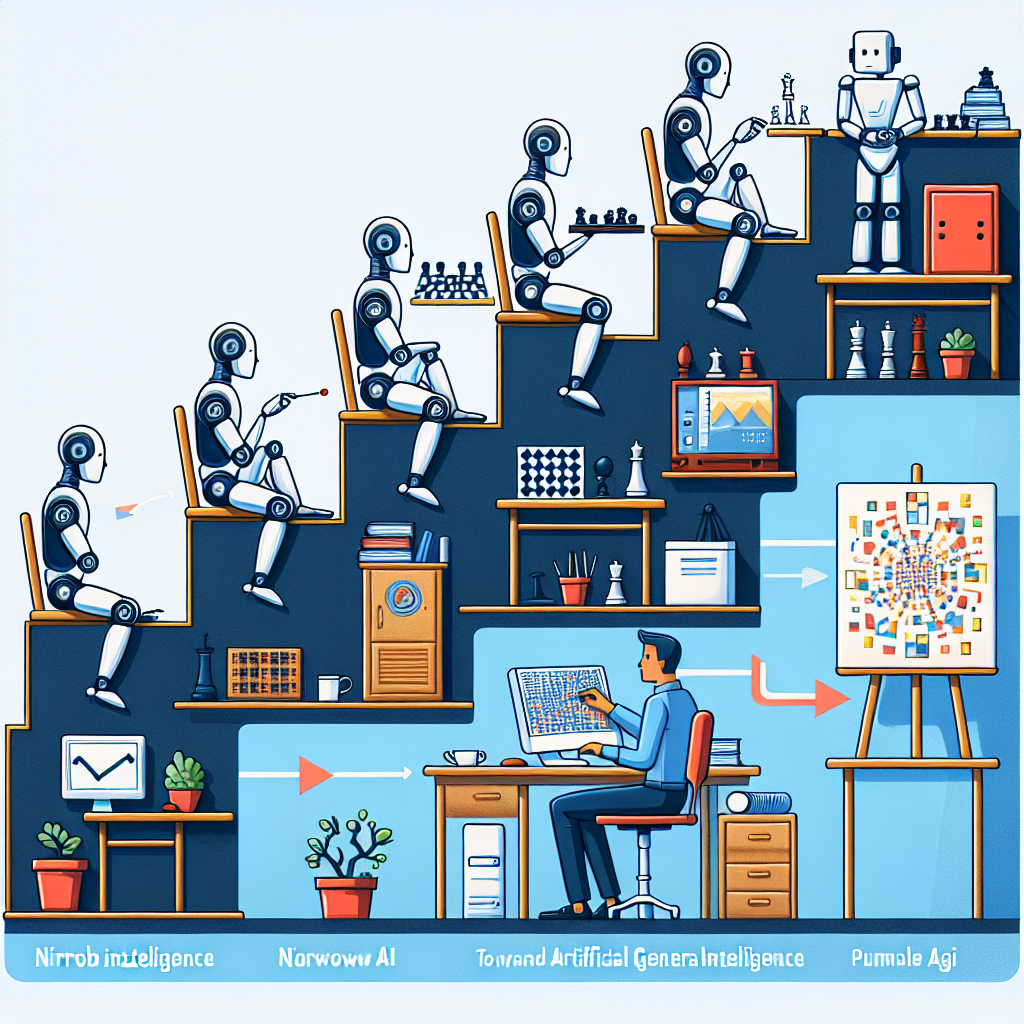From Narrow AI to AGI: Exploring the Evolution of Intelligent Machines
Artificial Intelligence (AI) has come a long way since its inception, with advancements in machine learning, natural language processing, and computer vision transforming the way we interact with technology. While narrow AI systems are currently the most prevalent form of AI in use today, researchers and engineers are working towards the development of Artificial General Intelligence (AGI) – a type of AI that can perform any intellectual task that a human can.
In this article, we will explore the evolution of intelligent machines, from narrow AI to AGI, and discuss the challenges and opportunities that lie ahead in the field of artificial intelligence.
Narrow AI: The Current State of AI
Narrow AI, also known as weak AI, refers to AI systems that are designed to perform specific tasks or functions. These systems are trained on large datasets and are capable of learning to perform a particular task with a high level of accuracy. Examples of narrow AI include virtual assistants like Siri and Alexa, recommendation systems like those used by Netflix and Amazon, and autonomous vehicles.
Narrow AI systems are highly specialized and excel at performing specific tasks within a narrow domain. However, they lack the ability to generalize their knowledge and skills to new tasks or environments. This means that while a narrow AI system like AlphaGo can beat the world champion in the game of Go, it would struggle to perform a simple task like identifying objects in an image.
The Evolution of AI: From Narrow AI to AGI
Artificial General Intelligence (AGI), also known as strong AI, is the holy grail of artificial intelligence research. AGI refers to AI systems that possess the ability to understand and learn any intellectual task that a human can. These systems would be capable of reasoning, problem-solving, and adapting to new situations in a way that is indistinguishable from human intelligence.
While AGI is still largely a theoretical concept, researchers and engineers are working towards its development by combining advancements in machine learning, deep learning, and cognitive science. The goal of AGI research is to create AI systems that can learn from experience, reason about the world, and make decisions in a way that is similar to human cognition.
Challenges and Opportunities in AGI Research
Developing AGI poses a number of challenges, both technical and ethical. One of the biggest challenges in AGI research is creating AI systems that are capable of generalizing their knowledge and skills across different tasks and domains. This requires developing algorithms that can learn from limited data, reason about complex problems, and adapt to new environments.
Another challenge in AGI research is ensuring that AI systems are safe, reliable, and ethical. As AI systems become more intelligent and autonomous, there is a growing concern about the potential risks and consequences of their actions. Ensuring that AI systems are aligned with human values and goals is crucial to the development of safe and beneficial AGI.
Despite these challenges, the development of AGI also presents a number of opportunities for society. AGI has the potential to revolutionize industries such as healthcare, transportation, and finance, by automating tasks, improving decision-making, and enhancing productivity. AGI could also help address some of the most pressing challenges facing humanity, such as climate change, poverty, and disease.
Frequently Asked Questions
Q: What is the difference between narrow AI and AGI?
A: Narrow AI refers to AI systems that are designed to perform specific tasks within a narrow domain, while AGI refers to AI systems that possess the ability to understand and learn any intellectual task that a human can.
Q: How close are we to achieving AGI?
A: While AGI is still largely a theoretical concept, researchers and engineers are making steady progress towards its development. It is difficult to predict when AGI will be realized, but some experts believe that we could see the first AGI systems within the next few decades.
Q: What are the potential risks of AGI?
A: One of the biggest risks of AGI is the potential for AI systems to act in ways that are harmful or unethical. Ensuring that AI systems are aligned with human values and goals is crucial to the development of safe and beneficial AGI.
Q: How can we ensure that AGI is developed responsibly?
A: Ensuring that AGI is developed responsibly requires collaboration between researchers, policymakers, and industry stakeholders. It is important to establish ethical guidelines, regulations, and oversight mechanisms to ensure that AI systems are safe, reliable, and aligned with human values.
In conclusion, the evolution of intelligent machines from narrow AI to AGI represents a significant milestone in the field of artificial intelligence. While AGI is still largely a theoretical concept, researchers and engineers are working towards its development by combining advancements in machine learning, deep learning, and cognitive science. By addressing the challenges and opportunities that lie ahead, we can harness the full potential of AGI to benefit society and improve the human condition.

